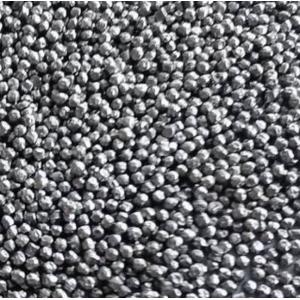
Add to Cart
Enhance Gears Performance With Grinding Pills Strengthening And More
a. Exceptional Impact Resistance and Performance Stability: Low carbon steel shot possesses a bainite structure formed through isothermal transformation. This unique structure provides remarkable impact resistance and ensures consistent and stable performance even under challenging conditions.
b. High-Quality Composition: Low carbon steel shot is crafted from high-quality, low-carbon, low-residue, low-phosphorus, and low-sulfur new scrap steel. It does not undergo heat treatment, preserving the desired hardness of the steel shot.
c. Enhanced Toughness and Reduced Consumption: The organizational structure of low carbon steel shot contributes to its high toughness, making it highly resistant to breakage. It can withstand approximately 3,600 repeated cycles, reducing consumption by over 20% compared to high-quality high carbon steel shot.
d. Improved Equipment Efficiency and Maintenance: Low carbon steel shot maintains its round shape, ensuring smooth contact between the equipment and steel plates. Conversely, high carbon steel shot is prone to breakage, resulting in angular steel shots that increase wear on the shot blasting head and lining. This leads to reduced efficiency and longer maintenance times, resulting in increased downtime. By utilizing low carbon steel shot, businesses can reduce equipment wear and tear, resulting in at least a 15% decrease in associated maintenance costs compared to high carbon steel shot.
e. Reduced Dust Generation and Emission: Low carbon steel shot undergoes gradual size reduction layer by layer, significantly reducing dust generation during the shot blasting process. This reduction in dust translates to a decrease in dust emission of at least 20%, contributing to a cleaner and healthier working environment.
| Product Name | Grinding Pills |
|---|---|
| Material | Stainless Steel |
| Production Process | Refined by drawing, cutting, strengthening and other processes |
| Size | 0.2mm-3.0mm |
| Hardness | HRC 36-52 |
| Hardness Deviation | -3.0-3.0HRC |
| Chemical Composition | C 0.06-0.12%, Si 0.12-0.3%, Mn 0.25-0.5%, S 0.045%, P 0.05% |
| Features | Strong Impact Resistance and Stable Performance |
| Application | Springs, Connecting Rods, Crankshafts, Gears, Rocker Arms, Camshafts and other components subject to alternating torque in the automotive industry, as well as other industrial fields |
Metal Processing Excellence: Grinding pellets are extensively employed in the metal processing industry to achieve a smoother and more uniform metal surface. They effectively remove oxide layers, scratches, welding slag, and other surface imperfections. This makes them ideal for grinding and polishing a wide range of metal products, including castings, forgings, steel, aluminum, stainless steel, and more.
Automotive Precision: The automobile industry heavily relies on grinding pellets for both manufacturing and repair purposes. These pellets are commonly used for the surface treatment of automotive parts, such as engine components, body parts, wheels, and more. By employing grinding pellets, the surface quality and smoothness of these parts are significantly improved, enhancing their overall appearance and performance.
Aerospace Excellence: Grinding pellets play a crucial role in the aerospace industry, particularly in the grinding and polishing of aerospace engine parts, aircraft structural components, and more. Their usage ensures that the surface quality of these critical parts meets the high demanding standards and specifications set by the aerospace industry.
Electronics Industry Precision: Grinding pellets find extensive application in the electronics industry for the surface treatment of electronic components and semiconductor devices. By removing welding slag, oxide layers, and other contaminants, grinding pellets greatly enhance the surface finish and electrical performance of these components. This is vital in ensuring the reliability and functionality of electronic devices.
Precision Machining Expertise: Grinding pellets are widely embraced in the field of precision machining, catering to the grinding and polishing needs of optical components, watches, jewelry, and other precision parts. Their usage enables the attainment of high-precision and high-finish surfaces, meeting the stringent requirements of precision machining processes.



